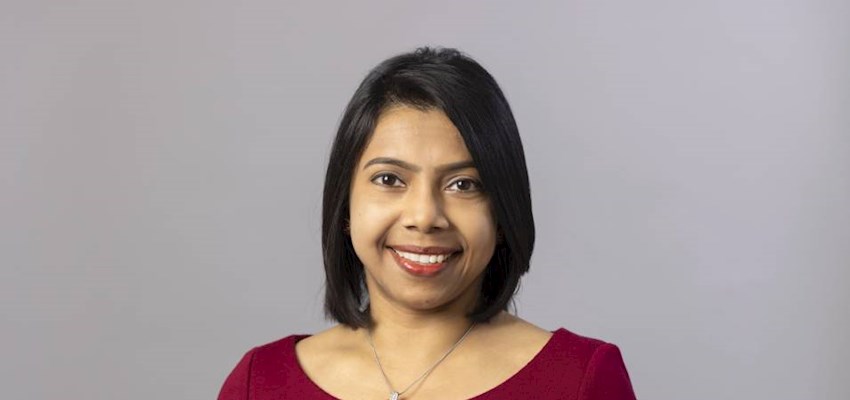Getting pregnant with Premature Ovarian Insufficiency (POI)
Dr Anupa Nandi
Dr Nandi is a Consultant Gynaecologist and a SubSpecialist in Reproductive Medicine at the Lister Fertility Clinic.
Here she discusses Menopause and Premature Ovarian Insufficiency (POI) and answers some key questions around the topic.




What is the difference between Menopause and POI?
Menopause is inevitable; all women will enter this phase, usually around 45-55 years of age, and during this time, their ovaries stop producing eggs and menstruation stops.
However, for approximately 1 in 100 women, their ovaries run short of eggs and stop working before they reach 40. Sometimes, it can happen as early as the teenage years. This is described medically as premature ovarian insufficiency or primary ovarian insufficiency (POI). In the past, it used to be called ‘premature menopause’ or ‘premature ovarian failure’, but these terms are no longer used.
POI is not quite the same as menopause. Women with POI are young and so, if they do produce eggs, they’re likely to be good quality, and although they have a reduced number of eggs in their ovaries and ovulate inconsistently, it is possible for them to conceive.
A diagnosis of POI is based on having irregular periods and blood tests showing raised FSH >25 on two occasions, four weeks apart.
Why has this happened to me?
Women are born with around two million premature eggs called primordial follicles, which are depleted continuously until less than 1000 remain. This is when a woman enters menopause.
In women with POI, the depletion could happen faster, which happens to women who have Fragile X syndrome, or they could be born with a smaller number of follicles, which can be the case in a syndrome such as Turner’s. In some women, it could run in the family; about 10% -20% of women will have a family history of early menopause.
Rarely, it could be due to immune disorders damaging the follicles in the ovary or damaging the glands producing hormones needed to support normal function of the ovary, which can happen if a person has thyroiditis or Addison’s disease.
Chemotherapy and radiotherapy for cancer treatment can also cause POI.
There is also evidence that smoking cigarettes causes rapid depletion of follicles and leads to POI, although causal relationship has not been established.
In many cases, we just don’t know the reasons why a woman’s ovaries stop producing eggs.
Can it be reversed?
Unfortunately, there are no treatments available that can restore the ovarian function after POI.
If left untreated, the lack of oestrogen can cause complications such as osteoporosis, heart disease and depression. To prevent these, it is advisable to consider hormone replacement therapy (HRT). To reduce the risk of osteoporosis, women with POI should take 1,200 to 1,500 mg of elemental calcium and 1000 IU of vitamin D, every day.
In less than 5% of cases, the ovaries can start producing eggs again. However, it is difficult to predict in whom it will happen.
How can I get pregnant with POI?
It is possible to conceive naturally with POI, although the chances are extremely low.
Women with POI do ovulate, just inconsistently. If they happen to have intercourse around the time of ovulation, conception can happen. However, it is difficult to anticipate when a woman will ovulate due to the irregular cycle and so it is difficult to plan timed sexual intercourse.
There are no medical interventions that can increase ovarian activity and increase the chances of pregnancy.
Egg donation is the best treatment option for women with POI.
Egg donation remains the best treatment option.
Can Clomid (Clomiphene Citrate) help with premature ovarian failure?
Unfortunately, Clomid has not been shown to be effective in POI.
Stimulating the ovaries with FSH can be tried and can be successful in some cases. However, the chances of ovaries not responding to the stimulation with FSH remains a high possibility.
I heard about various new treatments being available for women with POI
There are some centres who offer newer techniques like in vitro activation, mitochondrial activation technique, stem cell therapy, and platelet-rich plasma intra-ovarian infusion.
However, these treatments are in the experimental stage and have not yet been converted into regular clinical treatments.
How does egg donation treatment work?
To have IVF treatment with donated eggs, you need to visit a registered fertility clinic. Both fresh eggs from donors or frozen eggs from egg banks can be used. At the Lister Fertility Clinic, we run a successful egg donation programme. You can find out more about it here.
You can also have eggs donated from someone you know. In these circumstances, the clinic would check if they are suitable to donate eggs to you by checking their medical history, eggs reserve, age and by performing tests to rule out genetic or infectious diseases.
The eggs will be fertilised with sperm from a donor or your partner, and the resulting embryo will be transferred to your womb so that you can carry the pregnancy.
As per the UK legislation, any child born from donated eggs or sperm can find out the name and address of the donor when they turn 18 years old. We therefore advise you talk to any children about the nature of their conception to minimise any emotional distress. We have counselling teams on hand if you need them.
What are my chances of getting pregnant if I do egg donation treatment?
Egg donation treatment is highly successful, with your chance of conception almost 50%. However, if you are considering using eggs from someone you know, it might be lower, based on the age and egg reserve of that person.
Are there any risks to the pregnancy?
If you conceive naturally, the risks to pregnancy are no higher than the general population.
However, egg donation treatment can be associated with a high risk of pre-eclampsia and is considered a high-risk pregnancy. You will need to be looked after by specialist maternity units. You should always disclose that you used donor eggs to the maternity team, so that you receive the right care.
If you’d like to see Dr Nandi to find out more, please contact her here